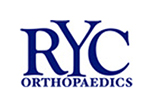News
Over-the-counter painkillers treated painful injuries just as well as opioids in new study
Source: Los Angeles Times
In an opioid epidemic that currently claims an average of 91 lives per day, there have been many paths to addiction. For some, it started with a fall or a sports injury, a trip to a nearby emergency room and a prescription for a narcotic pain reliever that seemed to work well in the ER.
Morbidly obese, nonobese patients experienced similar outcomes after revision THA
Source: Healio
Morbidly obese patients who underwent aseptic revision total hip arthroplasty experienced similar complications, failures and clinical outcomes compared with nonobese patients, according to study results.
Study finds predictors for ACL injury are dissimilar between male and female athletes
Source: Healio
Except for increased anterior-posterior knee laxity, results from this study indicated female athletes and male athletes were not similar with regard to predictors for first-time noncontact ACL injury.
Liposomal bupivacaine, interscalene block had similar efficacy in total shoulder arthroplasty
Source: Healio
Results published in Orthopedics showed similar efficacy between injectable liposomal bupivacaine and an interscalene brachial plexus block among patients who underwent total shoulder arthroplasty.
Rheumatoid arthritis could be treated with a novel hydrogel
Source: Medical News Today
A simple yet effective new treatment for rheumatoid arthritis may be in sight; researchers have now created a hydrogel that could absorb the excess joint fluid that arises with disease, as well as deliver medications to affected joints.
Greater wound healing, renal complications found among TJA patients with gout
Source: Healio
Recently published results showed patients with gout who underwent total joint arthroplasty had greater wound healing and renal complications compared with patients without gout.
Research finds decrease in opioid use among patients recovering from hip and knee replacement
Source: News medical.net
Opioid use in patients recovering from hip and knee replacement decreased by one-third between 2006 and 2014, reflecting success in efforts to promote a multimodal approach to pain management (using a variety of methods to manage pain) rather than using opioids alone, reveals new research being presented at the ANESTHESIOLOGY® 2017 annual meeting.
Large variation found in 3-D UKA alignment analysis for femoral, tibial components
Source:Healio
Recently published results showed large variation in the rotational plane for both femoral and tibial components during 3-D unicompartmental knee arthroplasty component alignment analysis in the standing position, suggesting the importance of component positioning.
Single image slice may not capture 3-D muscle measurements in rotator cuff tears
Source:Healio
Patients with rotator cuff tears experience fatty infiltration increased percentages of most likely caused primarily by muscle atrophy and a single image slice did not capture 3-D muscle measurements, according to recently published data..
Prospective study showed TKA not detrimental to patient participation in sports
Source:Healio
Results of a study presented at European Society of Sports Traumatology, Knee Surgery and Arthroscopy Congress, here, showed patients who participated in sports before total knee arthroplasty were able to participate in sports postoperatively and in some cases, patients were more active in sports after surgery.





